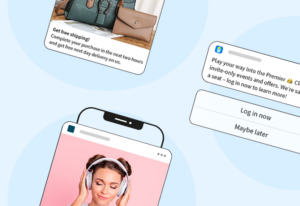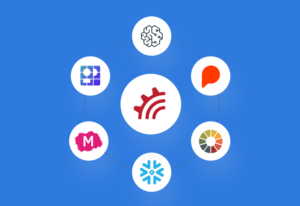While email hasn’t changed much over the past two decades, the technology around email has. Specifically, access to data to drive marketing automation and more thoughtful personalization has introduced many great companies and technologies — email “blasts” are now a forbidden term.
Working with data doesn’t always come naturally for marketing teams. Data Engineering and Marketing haven’t always meshed well. Many marketers have pinpointed that access to data (i.e. “data friction”) is one of the key things prohibiting them from achieving their marketing goals. Customer Data Platforms (CDPs) like Segment and mParticle have built their businesses around that single frustration. While CDPs might make some things easier, they come at a large cost. So what if there was another way? MessageGears is here to introduce you to the next-gen marketing platform.
What is MessageGears?
MessageGears is a 3-in-1 marketing platform built for the enterprise. All three products share the same architecture design — connecting directly to your data warehouse:
MessageGears Message — Cross-Channel Messaging / Email Service Provider
MessageGears Segment — Reverse-ETL (Data Segmentation and Activation)
MessageGears Engage — Marketing API-as-a-Service
MessageGears isn’t your typical SaaS marketing platform. As a connected application, we take a radically different approach to help you build the programs you’ve always dreamed of. We don’t just reduce data friction, we remove it entirely.
What is a Connected Application?
A connected app is a SaaS platform that connects to a customer’s internal data platform instead of loading data into their own managed data platform. In other words, connected apps don’t expect you to copy and sync your data to them like a traditional SaaS provider requires.
Here are the core principles for a connected app as we see it:
- The customer’s data warehouse is the “Source of Truth”
- The connected app is schema agnostic
- The provider must seamlessly provide data back to the customer’s data warehouse
- The connected app must ensure data security
For marketers specifically, there are so many advantages to this approach:
- Data Security and Governance: Keep your data safe at home
- Data Modeling: You get to determine what your data looks like, not your provider
- Reduced Cost: You’re not paying your provider for data storage
- Data Observability: No need to rely on your provider to know the state of your customers
- Better Reporting: With all of the data living in one place, it’s easier to create customized reports
For more information about connected apps, see Snowflake’s take on them.
The MessageGears Connected-App Model
For over six years, MessageGears has operated with the same architecture design, starting with our Message product. In the next blog posts, we’ll detail exactly how our hybrid SaaS approach is the future of enterprise DTC marketing.
Read more about MessageGears Connected-App Model up next below.
Up Next: Turn your Data Warehouse into a Marketing Platform: Part 1.






